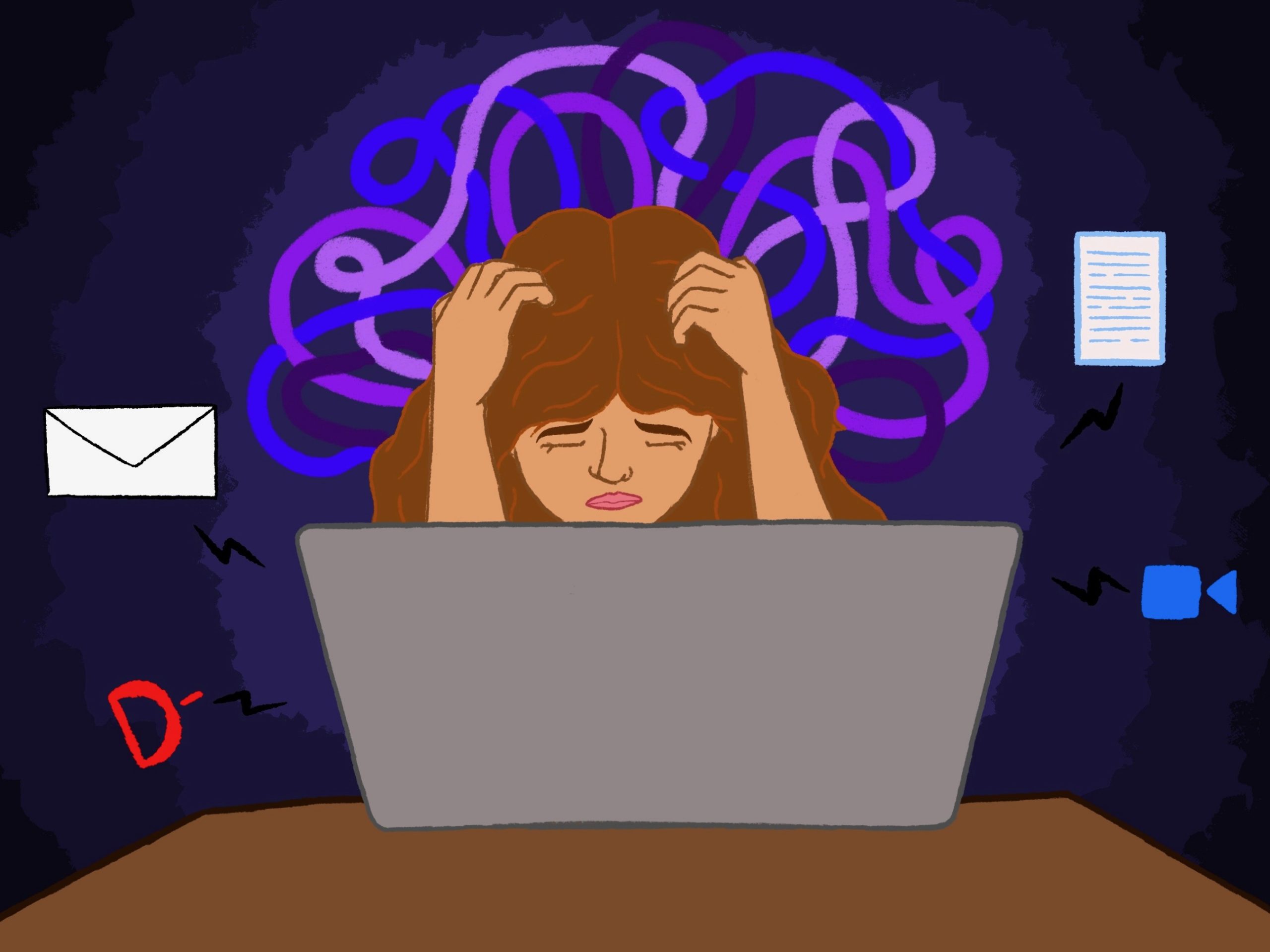![]()

On March 13, 2020, the day the United States officially designated the COVID-19 pandemic as a national emergency, I walked through the halls of my high school for the last time. As a senior during the COVID-19 pandemic, there were a lot of things that I missed out on, but the biggest loss I experienced was the support I was entitled to as a student with special educational needs.
According to the Pew Research Center in 2020, 7 million students in the United States have a disability. The Individuals with Disabilities Education Act (IDEA) establishes that disabled students have the right to a free and fair public education that accommodates their needs, and it is this act that guarantees 14 percent of public school students, myself included, access to special education services, specialized instruction, classroom accommodations, and more.
As a high school student, I was given a 504 plan, which outlines and provides accommodations in order to ensure academic success and equitable access to education. These accommodations allowed me to enroll in Advanced Placement and honors courses with the confidence that my needs would be met, and the support I received from instructors and staff was vital to my academic success.
When education shifted from in-person to online learning, everything changed.
Success in online learning requires a firm grasp on time management and organizational skills, areas that I struggle with as a student with ADHD and mental health issues. While my 504 plan was meant to provide the tools and support to lessen these struggles, the great majority of the accommodations I was receiving were only applicable in the context of in-person instruction, and my 504 plan was not revisited or changed despite the transition to a completely different learning format.
Instead of providing an increased amount of support for students trying to learn during a pandemic, my peers and I felt like the educational system cut us loose, providing us with less support and assistance than what we were given pre-pandemic. In addition, the switch to online learning drastically decreased the amount of time we spent interacting with and learning from our teachers, meaning that it was up to us to teach ourselves a substantial portion of the curriculum on top of completing the required coursework. All while learning from home, an environment full of potential distractions, that only exacerbated existing issues.
In the process of transferring curriculum and coursework into a format suitable for distance learning, it feels like schools and universities have forgotten that education is supposed to be accessible. The lack of accessibility and accommodations available to students during
distance learning is indicative of the fact that equitable access to education was never a priority to educational institutions. Accessibility in education is more than just a list of federal requirements that a school is legally obligated to comply with, but a concept that needs to be integrated into every facet of instruction. The fact of the matter is, the only way for education to be truly equitable is for it to be 100 percent accessible.
The last few months of one’s senior year are supposed to be relatively stress free, but for me, those months were characterized by an inescapable sense of drowning. Every test, quiz, and assignment felt like water filling my lungs, weighing me down as I did everything I could to stay afloat. I helplessly watched as the list of assignments grew longer and my grades continued to fall, and I began to wonder if I would ever be able to climb out of the hole I was in, one that only grew deeper as the days went on.
During this time of immense struggle, I watched the school board of my district vote not to join other school districts from around the state in changing the way grades were administered during distance learning. The school board cited school districts that had changed their grading system to Pass/No Pass or had simply chosen to give students all A’s for the semester, stating that they would not be following suit because they believed students in the district had the ability to rise to the occasion and continue to meet the expectations that they had been held to during pre-pandemic learning.
Watching the school board, an institution that is supposed to prioritize the well being of students above all else, decide that the expectations students were held to would stay the same despite the monumental changes we were all experiencing felt like a slap in the face. Why was I expected to adapt to the challenges of online learning during a pandemic when my accommodations and support systems were not adapted as well? Why do our schools expect students to maintain the same levels of productivity and achievement when they are not providing the same quality of education? Why is America’s educational system focused on how students can better adapt to difficult situations and not on how the educational system can better adapt to their needs? And finally, what do we lose by prioritizing compassion in the treatment of students during a time where everyone’s life has been majorly impacted by a global crisis?
In June, I officially graduated high school, passing all of my second semester classes. This fall, almost half a year after my last day of in-person schooling, I started my freshman year of college. I still face many of the same struggles I encountered with distance learning as a high school senior, as issues concerning accessibility and accommodations for students during this time are institutional and widespread. Trying to manage one’s education in the midst of a pandemic is a difficult task even without having to deal with accessibility issues, and the strain of social isolation, learning in a potentially turbulent or unsafe home environment and technological barriers can have an impact on even the most organized and motivated of students.
Every student trying to complete their education during this time deserves compassion, leniency, and understanding, and expecting students to perform at the same level as they did before COVID-19 will only cause harm. If we want our educational institutions to best serve the needs of students during this time, focus needs to shift towards accommodating and supporting the needs of all students and creating a learning environment that is accessible to all.


